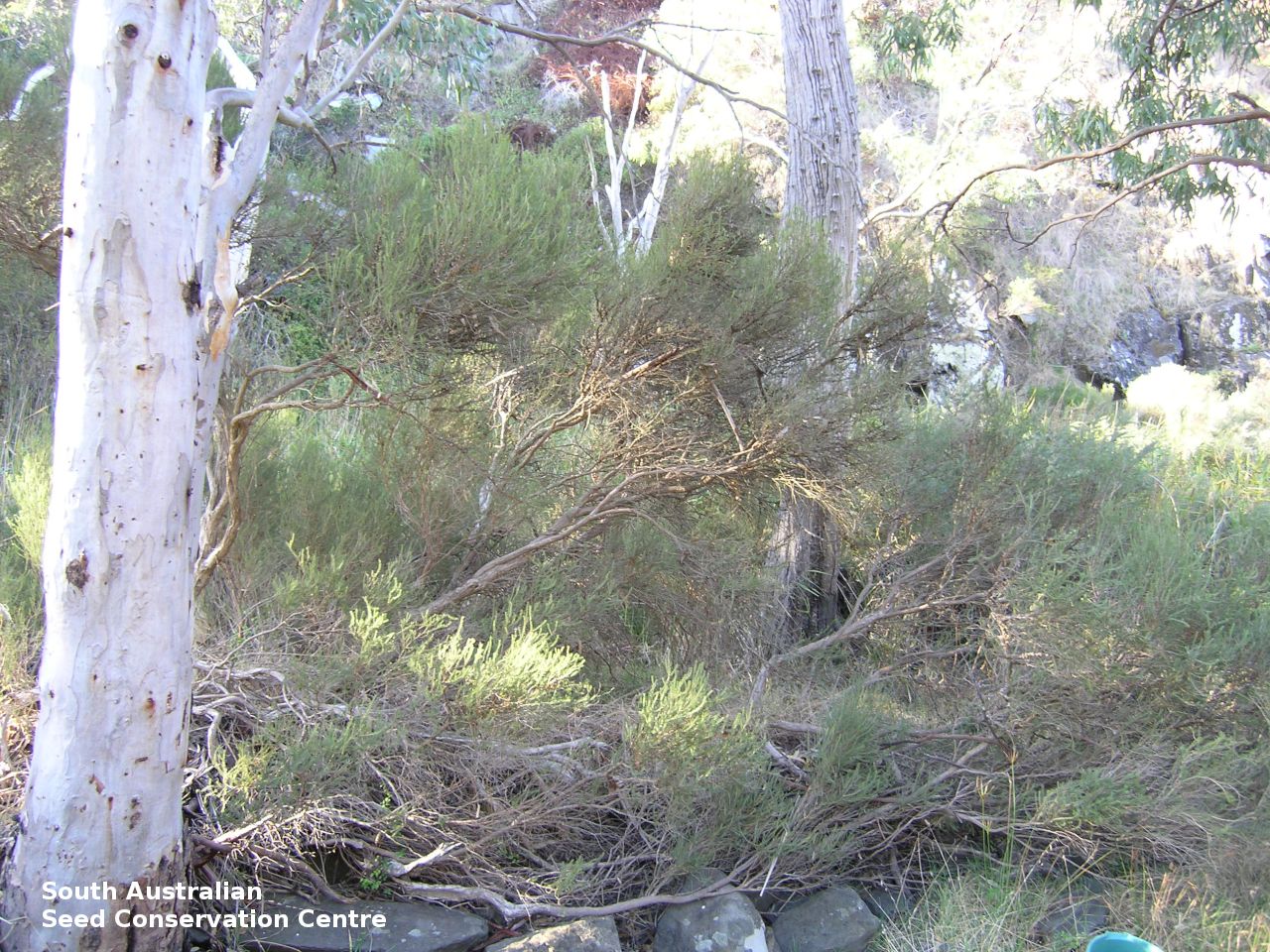
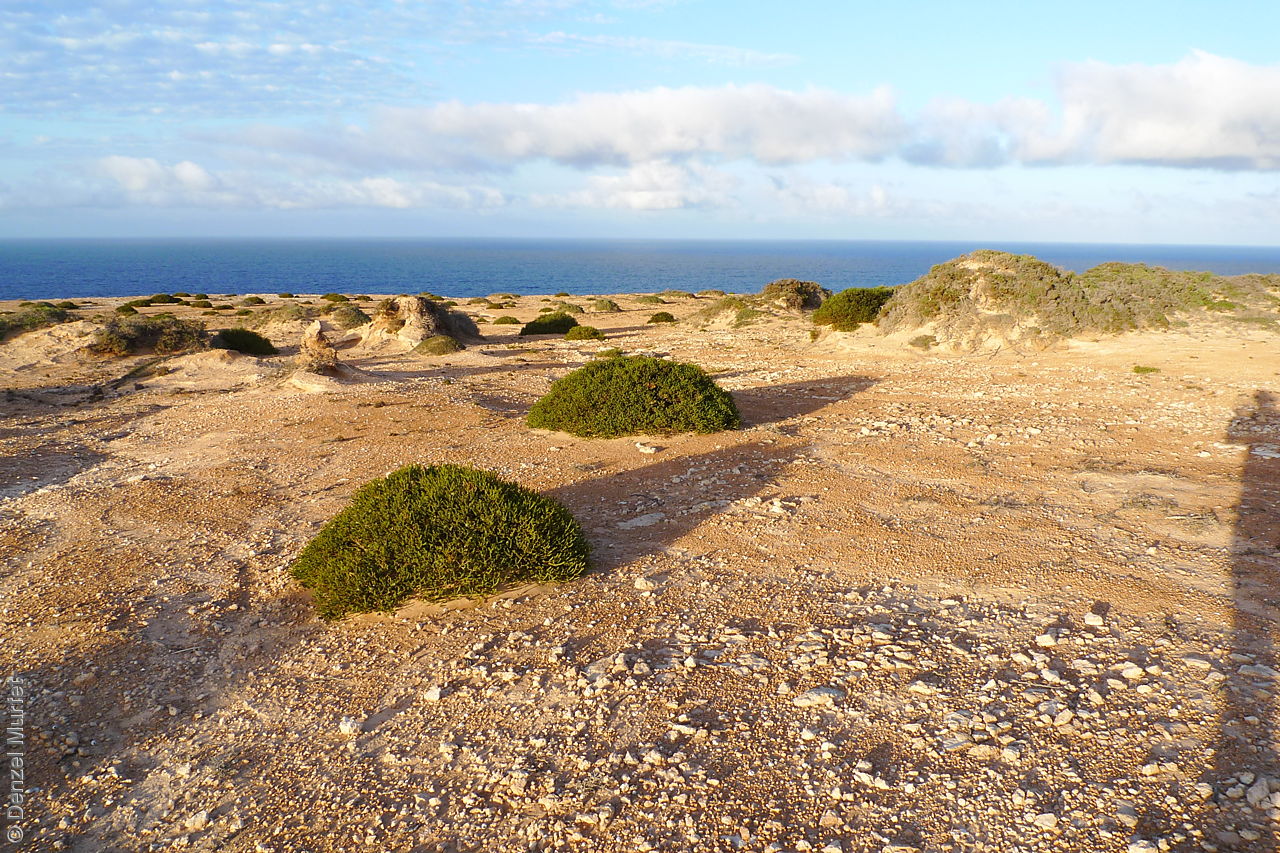
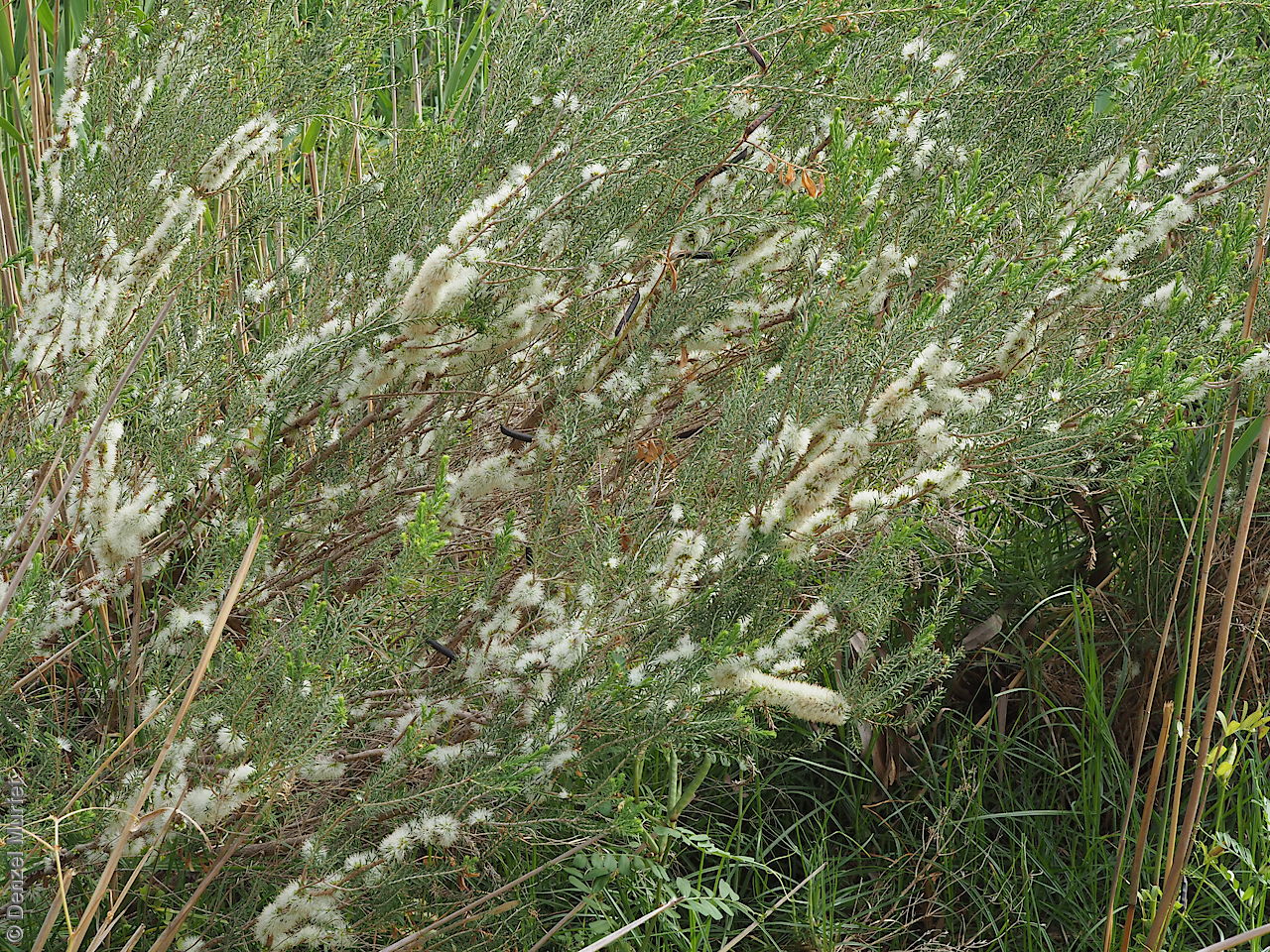
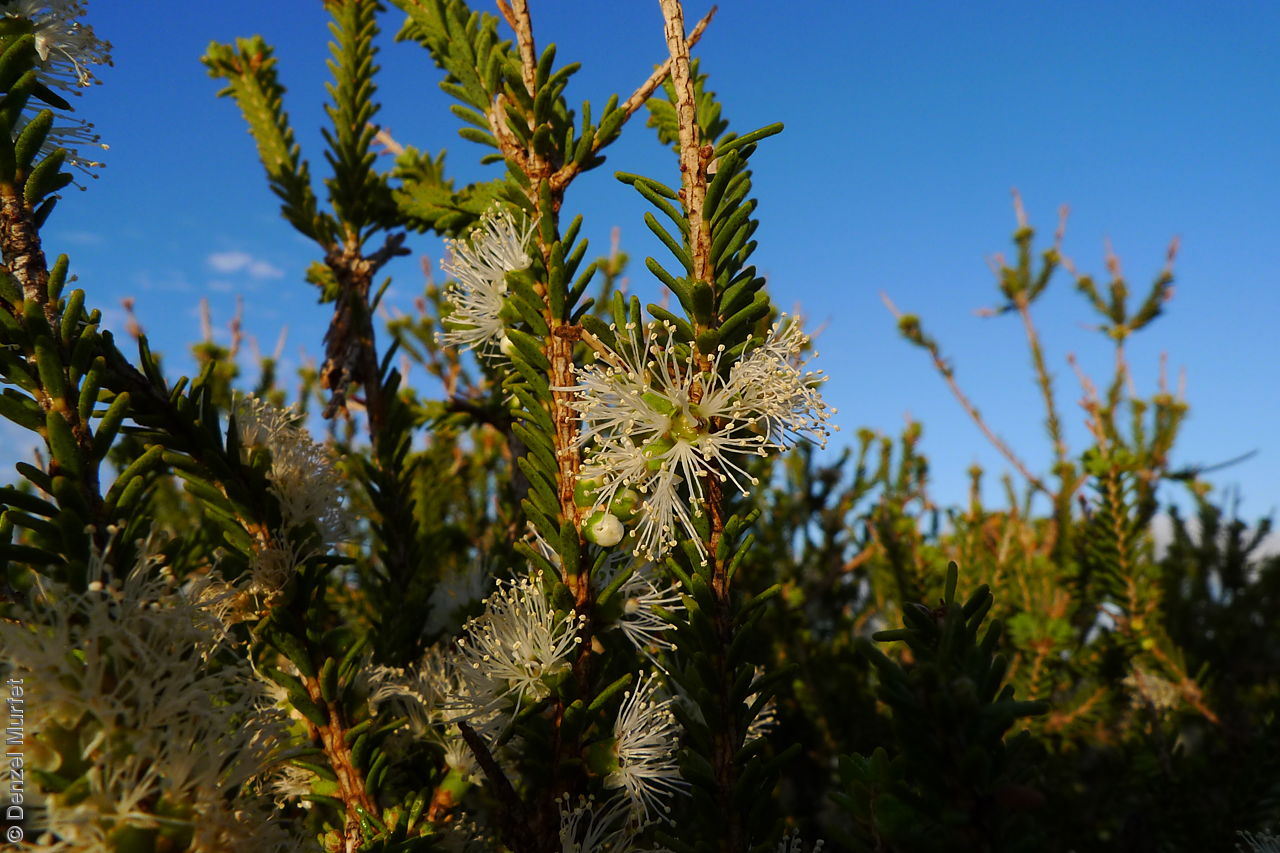
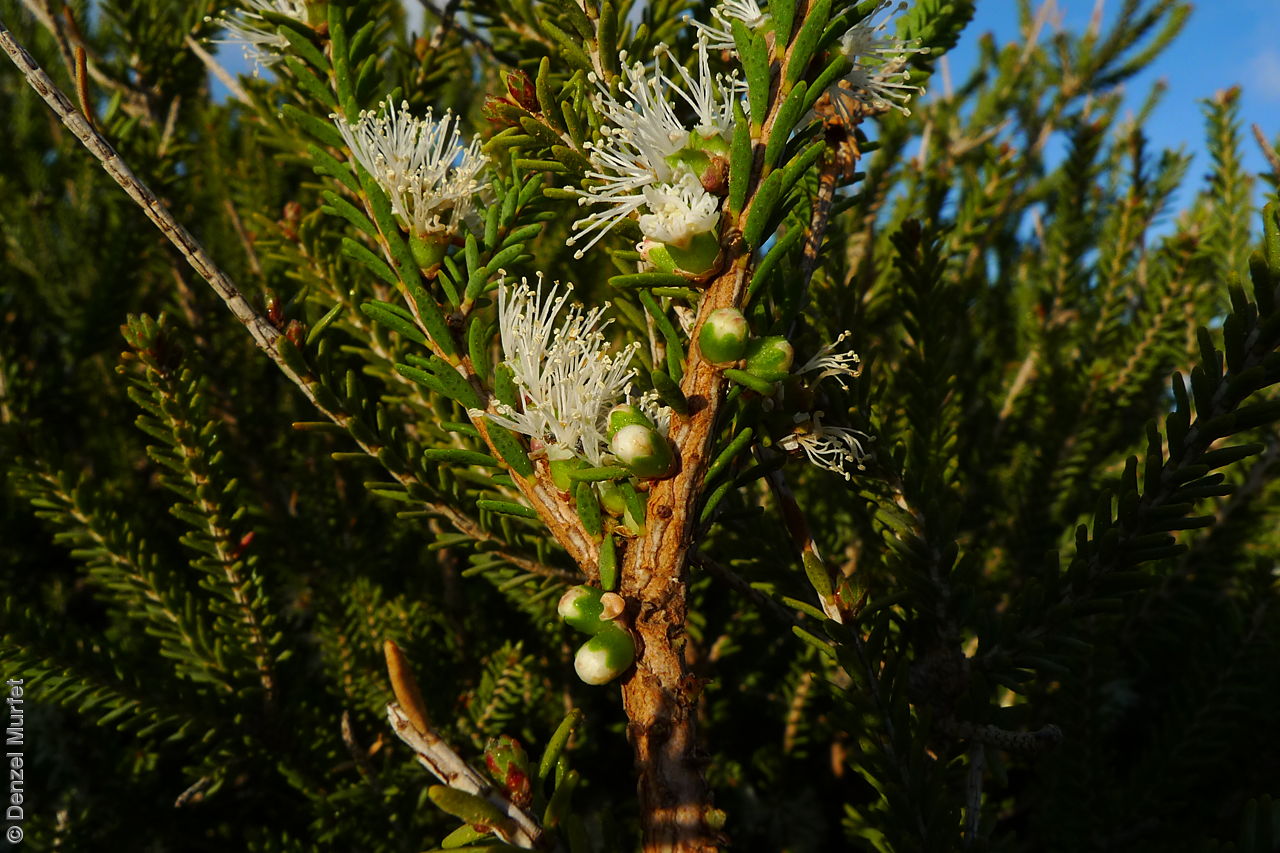

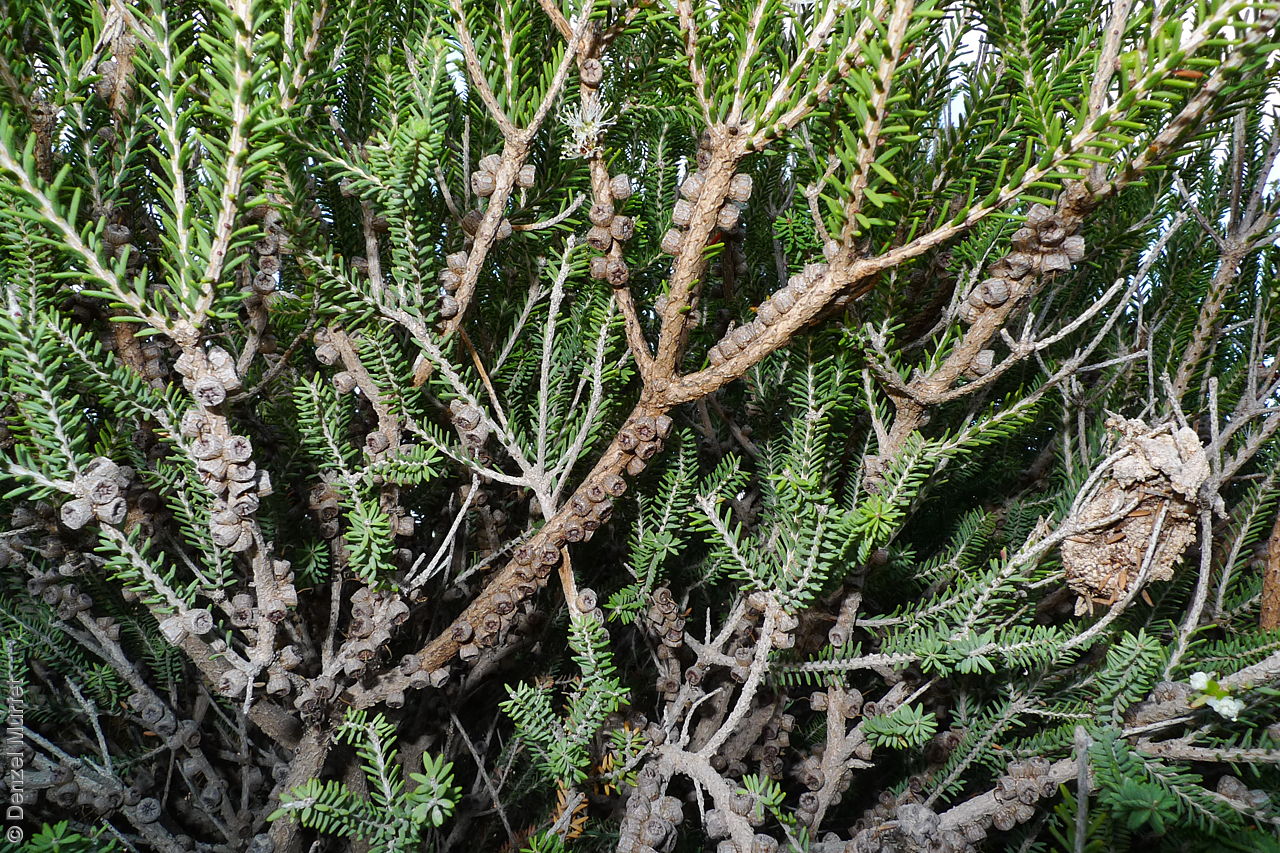
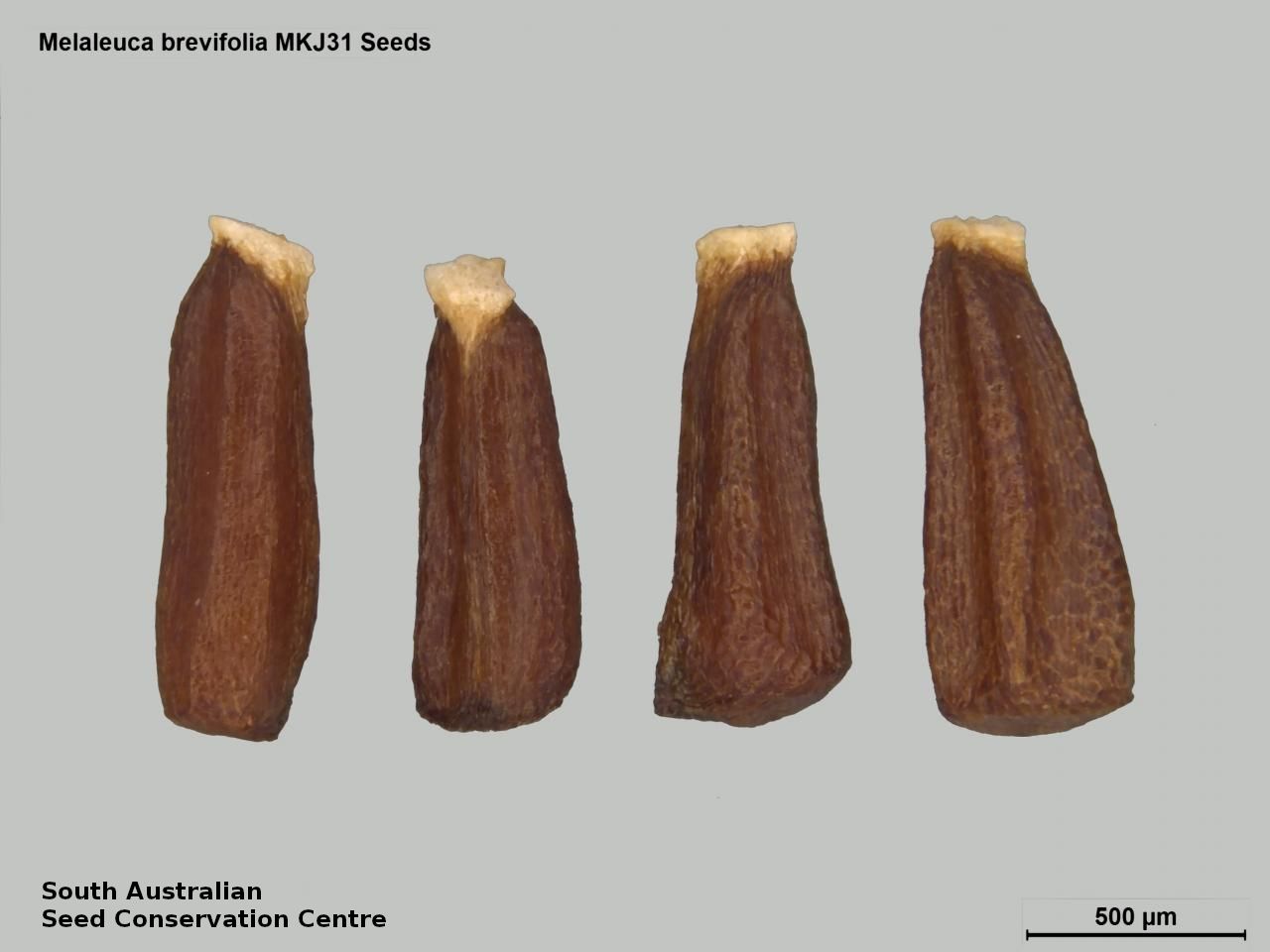


Botanical art
Prior names
Melaleuca oraria
Melaleuca neglecta
Melaleuca fasciculiflora
Melaleuca ericifolia
Common names
Swamp Honey-myrtle
Short-leaf Honey-myrtle
Etymology
Melaleuca, from the Greek 'melas', meaning black and 'leucon', meaning white, alluding to the contrasting colours of the bark of the first species described, which is said to have had white branches against a black trunk. Brevifolia, from the Latin 'brevis', meaning short and 'folium', meaning leaf.
Distribution and status
Found on the Eyre Peninsula, Kangaroo Island, Mount Lofty Ranges and the South-east in South Australia growing in swamps, lakes and streams, in heathland and open shrubland. Also found in Western Australia and Victoria. Native. Common in South Australia. Common in the other States.
Herbarium regions: Eyre Peninsula, Northern Lofty, Murray, Southern Lofty, Kangaroo Island, South Eastern, Green Adelaide
NRM regions: Adelaide and Mount Lofty Ranges, Eyre Peninsula, Kangaroo Island, Northern and Yorke, South Australian Murray-Darling Basin, South East
AVH map: SA distribution map (external link)
Plant description
Tall shrub to 3 m high; glabrous except for the sparsely pubescent young shoots. Leaves alternate or rarely in whorls of 3; compressed, narrowly linear-lanceolate, to 8 mm long and 1 mm wide; obtuse and slightly reflexed at the apex, wrinkled and with 2 rows of large distinct glands on the lower surface. Inflorescence in clusters to 11 mm wide, with solitary, or groups of 2–4, pale-cream flowers. Flowering in spring. Fruits are grey-brown corky, cup-shaped capsule to 4 mm long and 5 mm in diameter, in clusters on old wood. Seeds are tiny brown rectangular or pyramidal seed to 1.2 mm long and 0.5 mm wide. Seed embryo type is folded.
Seed collection and propagation
Collect seeds between January and December. Collect capsules that are large and hard, with closed valves. Place the capsules in a tray and leave to dry for at least two weeks or until all the valves are open. Then place all the capsules into a bucket with a lid if possible and shake hard to dislodge the seeds from the capsules. Use a sieve to separate the seeds from the capsules. The fine material will contain the seeds and other flowering material. It is very difficult to separate the seeds from this other material as the size, shape and weight are very similar. However the seeds will be a darker brown. Store the seeds with a desiccant such as dried silica beads or dry rice, in an air tight container in a cool and dry place. From one collection, the seed viability was high, at 100%. Seeds are non-dormant, viable seed should germinate readily.
| Location | No. of seeds (weight grams) | Number of plants | Date collected | Collection number Collection location | Date stored | % Viability | Storage temperature |
|---|---|---|---|---|---|---|---|
| BGA MSB | 189,800 (13.06 g) 189,800 (13.06 g) | 30 | 11-May-2004 | MKJ31 Southern Lofty | 1-Sep-2004 | +5°C, -18°C |
Number of plants: This is the number of plants from which the seeds were collected.
Collection location: The Herbarium of South Australia's region name.
% Viability: Percentage of filled healthy seeds determined by a cut test or x-ray.